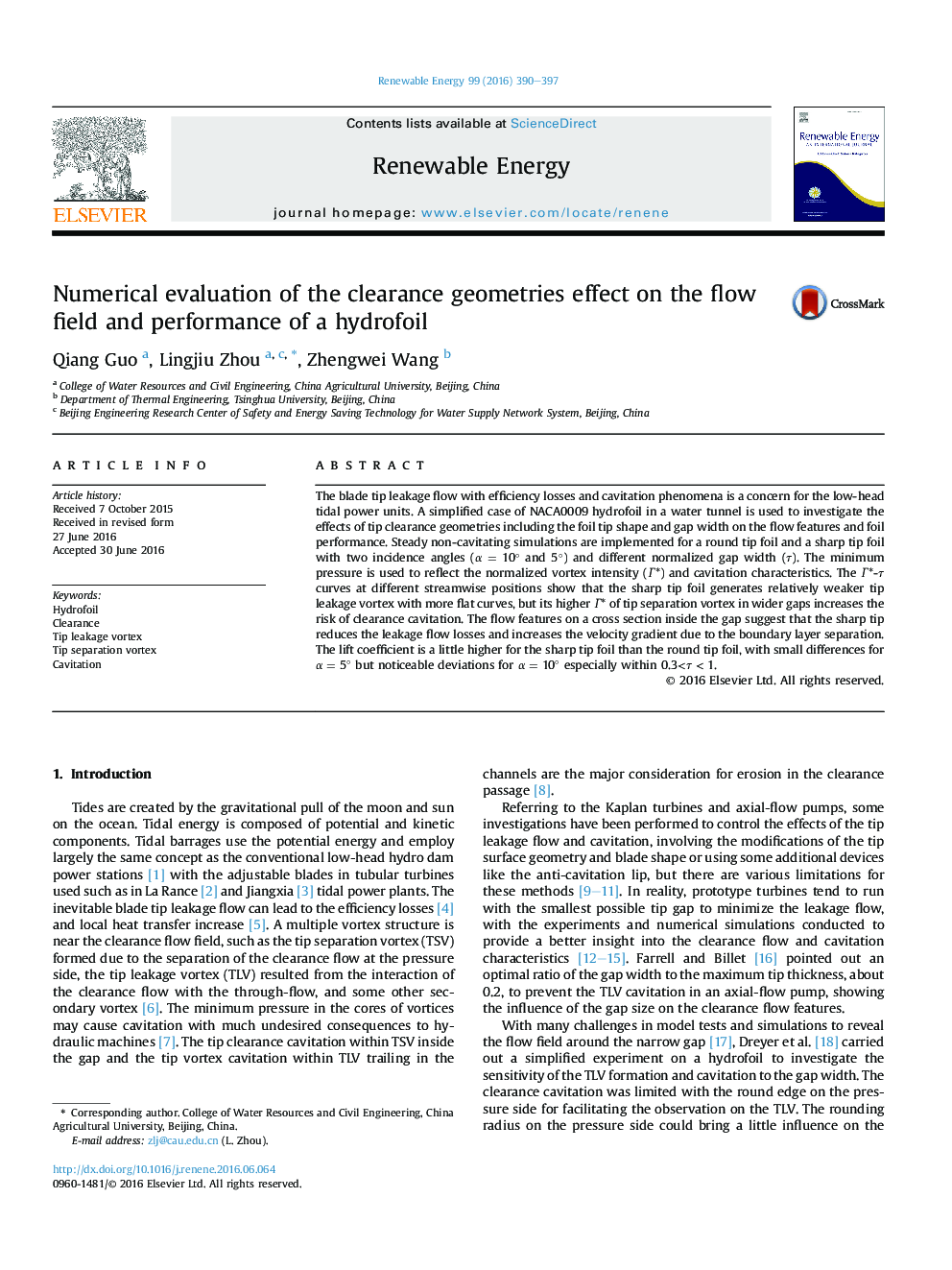| Article ID | Journal | Published Year | Pages | File Type |
|---|---|---|---|---|
| 6765518 | Renewable Energy | 2016 | 8 Pages |
Abstract
The blade tip leakage flow with efficiency losses and cavitation phenomena is a concern for the low-head tidal power units. A simplified case of NACA0009 hydrofoil in a water tunnel is used to investigate the effects of tip clearance geometries including the foil tip shape and gap width on the flow features and foil performance. Steady non-cavitating simulations are implemented for a round tip foil and a sharp tip foil with two incidence angles (α = 10° and 5°) and different normalized gap width (Ï). The minimum pressure is used to reflect the normalized vortex intensity (Î*) and cavitation characteristics. The Î*-Ï curves at different streamwise positions show that the sharp tip foil generates relatively weaker tip leakage vortex with more flat curves, but its higher Î* of tip separation vortex in wider gaps increases the risk of clearance cavitation. The flow features on a cross section inside the gap suggest that the sharp tip reduces the leakage flow losses and increases the velocity gradient due to the boundary layer separation. The lift coefficient is a little higher for the sharp tip foil than the round tip foil, with small differences for α = 5° but noticeable deviations for α = 10° especially within 0.3<Ï < 1.
Related Topics
Physical Sciences and Engineering
Energy
Renewable Energy, Sustainability and the Environment
Authors
Qiang Guo, Lingjiu Zhou, Zhengwei Wang,
